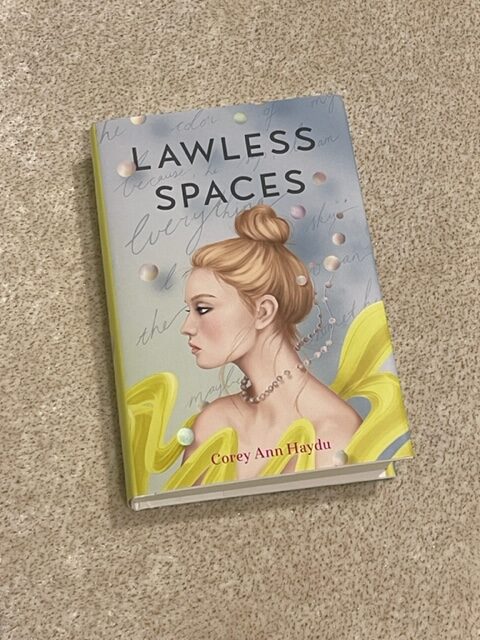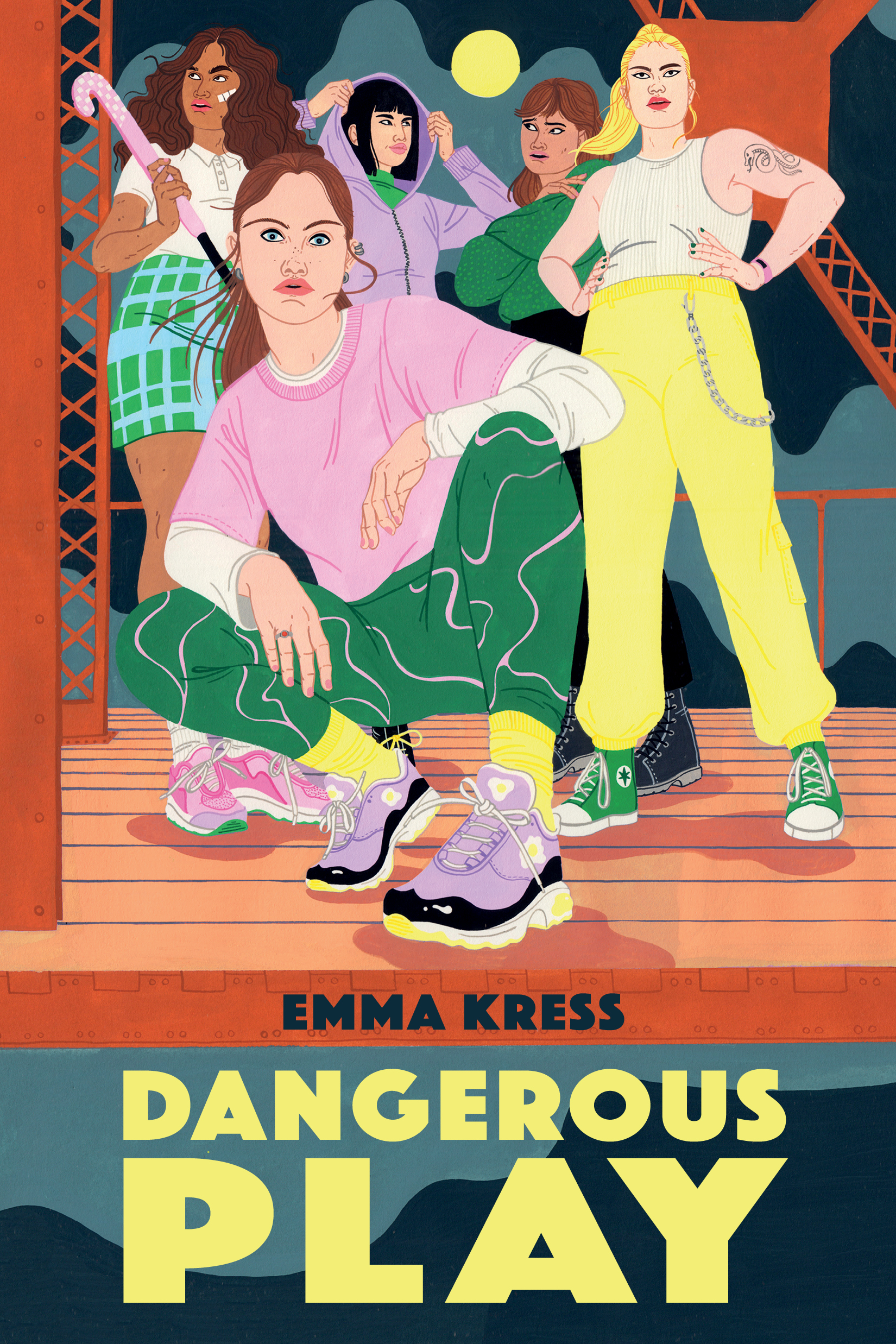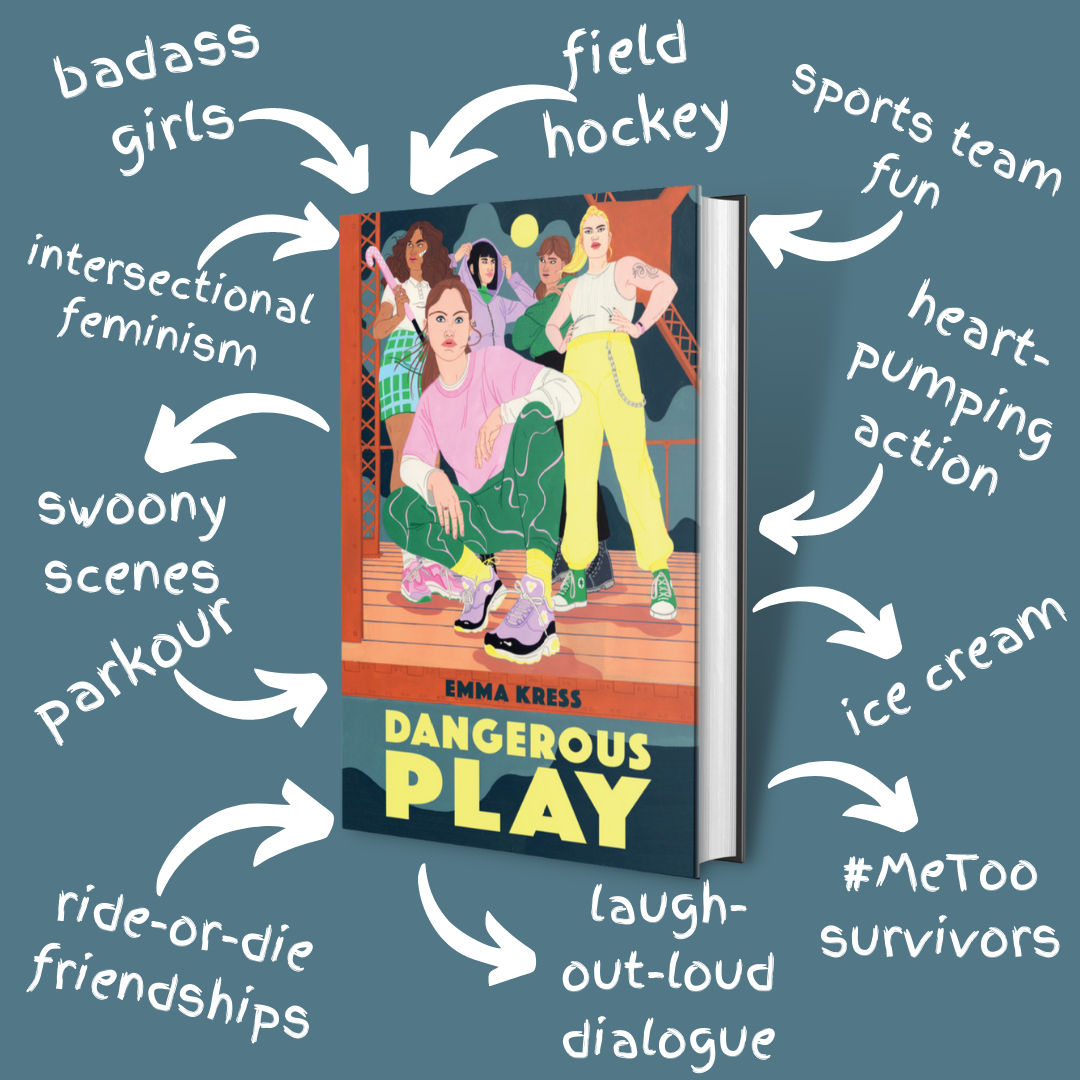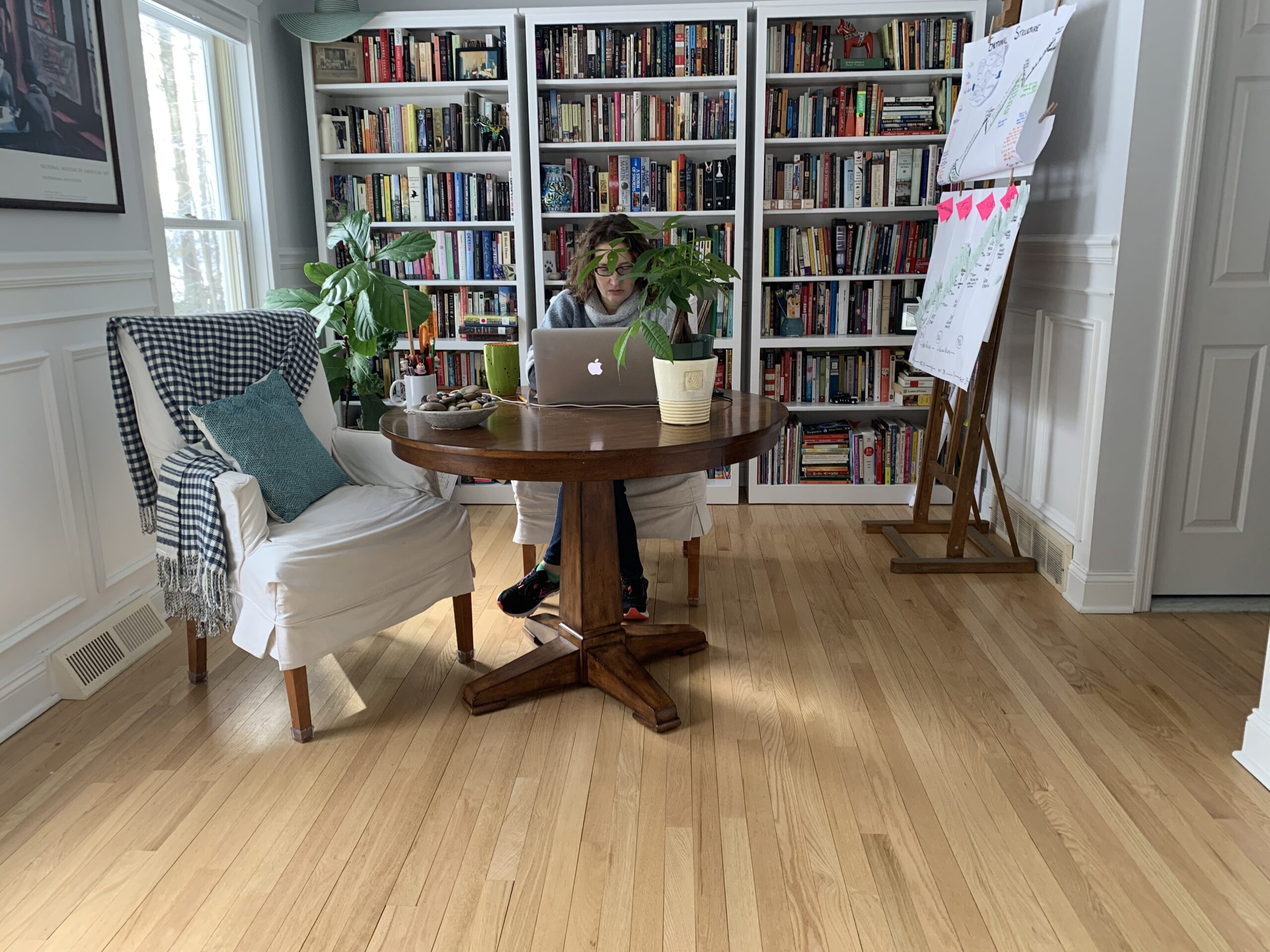Lawless Spaces & More with Author Corey Ann Haydu
Corey Ann Haydu has had quite a career. Besides being an amazing advisor in VCFA’s Writing for Children and Young Adults MFA program (I had the pleasure of working with and learning from her prior to doing the program as well as in my fourth semester), the acclaimed author has tackled everything from young adult and middle grade novels to chapter books to great effect with a combination of incredible skill in craft and her big, big heart. Her latest YA title, Lawless Spaces—her first novel in verse—is no exception. Here’s a brief description of the work that’s earned stars from Kirkus Reviews and Publisher’s Weekly, and is a Junior Library Guild Selection:
Perfect for fans of Deb Caletti, this poignant coming-of-age novel in verse follows a teen girl who connects with the women of her maternal line through their journals and comes to better understand her fraught relationship with her mother.
Mimi’s relationship with her mother has always been difficult. But lately, her mother has been acting more withdrawn than usual, leaving Mimi to navigate the tricky world of turning sixteen alone. What she doesn’t expect is her mother’s advice to start journaling—just like all the woman in her family before her. It’s a tradition, she says. Expected.
But Mimi takes to poetry and with it, a way to write down the realities of growing into a woman, the pains of online bullying, and the new experiences of having a boyfriend. And all in the shadows of a sexual assault case that is everywhere on the news—a case that seems to specifically rattle her mother.
Trying to understand her place in the world, Mimi dives into the uncovered journals of her grandmother, great-grandmother, and beyond. She immerses herself in each of their lives, learns of their painful stories and their beautiful sprits. And as Mimi grows closer to each of these women, she starts to forge her own path. But it isn’t until her mother’s story comes to light that Mimi learns about the unyielding bonds of family and the relentless spirit of womanhood.
 Poetry was a wonderful choice for Haydu’s poignant, heart-wrenching, and ultimately hopeful novel. It is raw, sometimes painful, and relatable to anyone who has ever felt trapped in their lives (such as during a pandemic), or trapped in/defined by their bodies, or powerless to speak out and make necessary change. Haydu explores mother/daughter relationships and all they entail (body image, power dynamics) across generations with courage and care, something that resonates with readers and reviewers alike.
Poetry was a wonderful choice for Haydu’s poignant, heart-wrenching, and ultimately hopeful novel. It is raw, sometimes painful, and relatable to anyone who has ever felt trapped in their lives (such as during a pandemic), or trapped in/defined by their bodies, or powerless to speak out and make necessary change. Haydu explores mother/daughter relationships and all they entail (body image, power dynamics) across generations with courage and care, something that resonates with readers and reviewers alike.
Haydu’s love of craft, her insight, and the amazing questions about living and life that she explores through her work give readers and writers alike a lot to ponder. Read on for her thoughtful and inspiring answers to our recent email Q & A:
What made you make the foray to writing a verse novel, and how did you prepare for that?
I’ve honestly always wanted to write in verse! Back in college my dream was to be an actress who published poetry on the side, and though many things changed about that dream over the years, my connection to poetry and the way a poem can so succinctly capture a moment and a feeling and get to the heart of things has remained the same.
I’ve been reading novels in verse basically since I first started reading in YA, sort of keeping in my back pocket the idea of them, loving that they existed, wondering if maybe I would get to wander over and try them myself some day. So the preparation was mostly that– years of reading them, and being excited by them, and understanding what makes them work. When it was time to actually write one of my own, I took it very slowly, just letting myself play with the form, long hand, and without a concrete plan for many years. It really helped to let myself stay in that exploratory phase for a long time.
 You now have various works published across so many genres (chapter books, middle grade and young adult novels (prose and verse). From creative and business standpoints, what have been the upsides of writing in so many different genres? Any challenges?
You now have various works published across so many genres (chapter books, middle grade and young adult novels (prose and verse). From creative and business standpoints, what have been the upsides of writing in so many different genres? Any challenges?
It’s hard to speak professionally, because I think that side of things is so unpredictable, and I tend to be a terrible judge of what will do well out in the world. But emotionally speaking, it has helped me a great deal to not have too much pressure on any one age category. My goal is always to get to focus on the writing– it’s the part of things I enjoy, and it’s the part I’m good at and suited for. And writing in multiple age categories lets me worry less about each individual book, once it’s out in the world. I worry about them a great deal when they’re in my hands, but once they come out, I’ve learned to let them go a bit, and focus on what’s next. There have been times my YA hasn’t been finding the readership I’d hoped for, and that’s why my middle grade started finding its space, and I’m so grateful I had that positive trajectory to focus on when certain books weren’t doing what I’d hoped.
Creatively, this is really just who I am. I like to try everything, writing-wise, I like to be challenged, and I’m inspired by every aspect of children’s publishing and storytelling generally. Feeling expansive and creative and out of my comfort zone really feeds me, and so far I have yet to get bored. I also have to say I’ve been incredibly lucky to have a supportive agent and supportive editors, who never told me I had to stay in one place. I’ve been encouraged to move around and explore other parts of my voice, and I don’t know why I’ve been given that chance, but i’m so glad I have, because it’s really how I work best.
 How has the pandemic impacted your writing life in terms of finding time and being in the headspace to do your best work? You’re obviously prolific and productive despite it all, so what has been most helpful to you in terms of getting it done?
How has the pandemic impacted your writing life in terms of finding time and being in the headspace to do your best work? You’re obviously prolific and productive despite it all, so what has been most helpful to you in terms of getting it done?
My number one current advice, especially for writers who also happen to be parents, but really for anyone who has a lot of demands on them in the home and is struggling to find their way creatively, is to get up early. I discovered 5am writing during the pandemic out of necessity– my toddler couldn’t handle me working while she was at home– and over the last two years every time I’m in a creative slump, I reintroduce that practice to myself. There’s something about writing before I have to be anyone else– a parent or a wife or a friend or a person in the world in any meaningful way– that really clarifies the work for me. I work faster, and better, and more enjoyably. I have found I need that, even though it can be tough. Once I’ve put on the parenting hat, it’s harder to transition into a creative space. So getting up very early is a gift I give myself as often as I can.
What was the spark for Lawless Spaces, and what do you hope readers glean from it?
I have long wanted to write a novel that follows mothers and daughters, that somehow tracks the things they are dealing with across generations. Maybe it all began with Gilmore Girls, and the incredible trifecta of Emilly, Lorelai, and Rory, and getting to see how baggage gets passed on and how it shifts and becomes something new. I have always wanted to understand that personally– and especially as I’ve become the mother of a daughter, those questions have gotten louder and more consuming for me. Once I started on that track, I realized it was time to write about a lot of things from my own life I hadn’t really addressed previously– specifically being a young girl in the entertainment industry, and living in a petite and curvy body, and how those things intersect with generational relationships and your own relationship with yourself. It was really an organic process, ultimately, where I found so much joy and healing.
As one of your former students who had the privilege to work with you, one of the things that most impresses me is your willingness to take risks in your writing, to wear your heart in so many of your gorgeous words, and your desire to keep pushing and keep learning. What books, films, music, craft resources etc. have influenced, helped, and inspired you most?
Honestly, poetry was a huge part of my teen years, when I was acting and writing, and also just struggling to put feelings into words and struggling to be understood. I was always deeply connected to the work of Sylvia Plath, as well as Pablo Neruda, Anne Sexton, and e.e. cummings. I loved their fearless and emotionally-forward approach to their work, and it not only resonated with me but helped me through really challenging times. Early on I was really blown away by Sandra Cisneros’ HOUSE ON MANGO STREET, which helped me understand the importance of small moments telling a bigger story. I’ve always been drawn to art that addresses difficult topics and challenging relationships. I was an actor, with a real affinity for the tragedy of THE GLASS MENAGERIE or the high-stakes ugliness of relationships in NO EXIT or the absurd takes on life of Christopher Durang’s work. I practically lived inside The Counting Crows’ first album, AUGUST AND EVERYTHING AFTER, which is a lyrically really heartbreaking and beautiful collection of songs– I loved how language and vulnerability combined to really make me feel understood in my pain.
I operate sort of heart-first, emotions-first with my work, and I certainly learned that from knowing what I connected with, and more than that probably what I needed. And that remains true– I like work that challenges me and stories that make me uncomfortable and language that makes me think about something anew. I’m also a collaborator, so I’ve been really influenced by the editors I’ve worked with, who have been really game to help me try new things and stretch into new spaces. I’ve found that caring more about learning than about being good at something is a real gift in a creative life. 🙂
Anything else you’d like to share?
Thanks so much for a such a smart, interesting collection of questions, and I hope the readers who are interested in the same things I’m interested in– bodies and mothers and daughters, and generational trauma, and how to push against the way the world sees you to be able to instead occupy the space that feels right for you– find LAWLESS SPACES. It was one of my favorite books to write, and I said so much I’ve been wanting to say, which always feels good.
To learn more about Corey Ann Haydu and her work, visit her website here. Lawless Spaces and her other books are available at Indiebound, Barnes & Noble, Amazon, or wherever books are sold.
Corey Ann Haydu is the author of many critically acclaimed middle grade and young adult novels, including EVENTOWN, RULES FOR STEALING STARS, EVER CURSED, and OCD LOVE STORY. She is also the author of the HAND-ME-DOWN MAGIC chapter book series. Corey is a graduate of NYU’s Tisch School of the Arts and The New School’s Writing for Children MFA program, and has been working in children’s publishing since 2009. In 2013, Corey was chosen as one of Publisher Weekly’s Flying Starts. Her books have been Amazon Book of the Month Selections, Junior Library Guild Selections, Indie Next Selections, and BCCB Blue Ribbon Selections. In 2020, she received an Edgar Award Nomination for her novel EVENTOWN. Corey is also a proud faculty member of the Vermont College of Fine Arts’ MFA in Writing for Children and Young Adults program. Corey lives in Brooklyn with her husband, her daughter, her dog, Oscar, and a wide variety of cheese.
Elisa Zied a writer for young people. She holds an MFA in Writing for Children and Young Adults from Vermont College of Fine Arts and an advanced Graduate Certificate in Children’s Literature from Stony Brook Southampton. She also earned a BA in psychology from University of Pennsylvania and an MS in clinical nutrition from New York University. Before embarking on a fiction writing career, she garnered millions of media impressions as a nutrition expert, spokesperson, and freelance health and nutrition writer. She also authored four award-winning nutrition titles including YOUNGER NEXT WEEK (Harlequin Nonfiction, 2014) and NUTRITION AT YOUR FINGERTIPS (Alpha Books/Penguin, 2009). She lives in New York City with her husband and two sons and is an avid walker, music lover, and amateur photographer.
 Described by
Described by 
 What was the spark that led to Dangerous Play, why was it important for you to write this particular story, and what did the process from spark to book look like?
What was the spark that led to Dangerous Play, why was it important for you to write this particular story, and what did the process from spark to book look like?

 What’s the best thing about transitioning from writer to debut author?
What’s the best thing about transitioning from writer to debut author?
Recent Comments